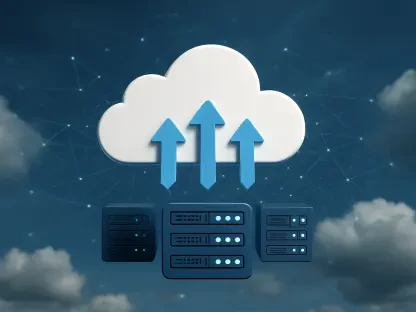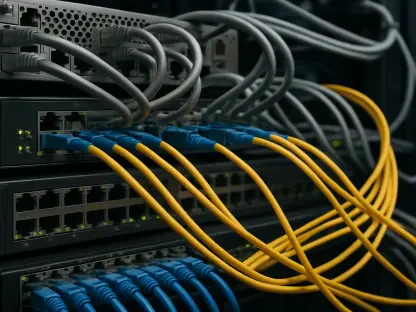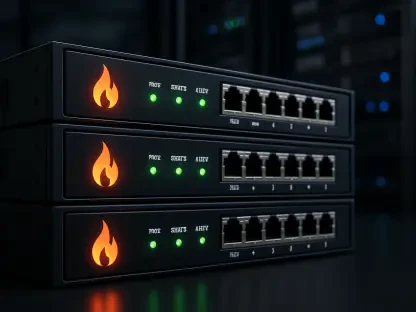In the rapidly evolving landscape of modern warfare, the U.S. Army is spearheading a transformative initiative known as Next Generation Command and Control (NGC2), designed to overhaul military communication and data management systems. At the core of this ambitious vision lies network transport—a fundamental layer that ensures seamless data sharing, robust connectivity, and integration across diverse operational environments. Without a strong and adaptable network backbone, the lofty goals of NGC2 risk becoming unattainable, leaving soldiers vulnerable in critical moments of decision-making. The ability to transmit vital information in real time, from the tactical edge to strategic headquarters, is no longer just an advantage but a necessity in multi-domain operations. This article explores the pivotal role of network transport in shaping the Army’s future, delving into the technologies, strategies, and innovations that are redefining how information flows on the battlefield. By examining the challenges and solutions, a clearer picture emerges of how connectivity drives mission success in an increasingly complex world.
Revolutionizing Connectivity with Hybrid Architectures
The foundation of NGC2 rests on a hybrid network architecture that merges traditional military communication tools with cutting-edge commercial technologies. This innovative blend incorporates tactical radios alongside advanced systems like 5G, Wi-Fi, and multi-orbit satellite connectivity, including Low Earth Orbit (LEO) and Medium Earth Orbit (MEO) solutions. Such diversity in communication pathways offers commanders multiple options to transmit data, ensuring resilience in unpredictable combat scenarios. Experts emphasize that no single technology can address every global operational need, making a versatile approach essential. By integrating these varied systems, the Army aims to create a unified network capable of supporting complex, multi-domain missions where adaptability is key to overcoming environmental or adversarial challenges.
Beyond diversity, this hybrid model addresses the critical need for redundancy in military communications. When one channel is disrupted—whether by enemy jamming or harsh terrain—alternative pathways ensure that data continues to flow without interruption. This flexibility empowers soldiers to maintain situational awareness and execute commands effectively, even under duress. The strategic integration of military-grade systems with commercial innovations not only enhances reliability but also leverages the rapid advancements in civilian tech to keep pace with evolving threats. Ultimately, this architecture is about building a network that refuses to fail, providing a lifeline for troops in the most demanding conditions and setting a new standard for operational connectivity.
Seamless Integration Through Agnostic Solutions
A critical aspect of NGC2 is the development of agnostic communication solutions that bridge the gap between legacy systems and modern technologies. Network kits engineered with plug-and-play functionality are being prioritized to support a broad spectrum of devices, including coalition radios, commercial systems, and satellite communications (SATCOM). These kits are designed to facilitate uninterrupted data transmission across all echelons, from small units to division headquarters, while incorporating high-speed 5G and LTE options for enhanced efficiency. The emphasis on interoperability ensures that warfighters can access real-time information—such as live sensor data or battle damage assessments—regardless of the specific network or equipment in use, breaking down historical barriers to information sharing.
This focus on agnostic systems also addresses the challenge of working with diverse partners and older equipment in joint or coalition operations. By creating tools that are not tied to a single vendor or protocol, the Army can ensure compatibility across a wide range of scenarios, fostering collaboration with allies and maintaining operational tempo. These solutions are not just about connecting devices but about enabling a cohesive flow of intelligence that empowers decision-making at every level. As threats become more sophisticated, the ability to integrate disparate systems into a unified network becomes a force multiplier, ensuring that no soldier is left isolated due to technological incompatibility. This approach marks a significant shift toward flexibility in military communications.
Cutting-Edge Tools for Network Resilience
Innovative solutions are driving the Army’s push for network resilience, with companies like Thales Defense & Security, Inc. (TDSI) playing a pivotal role through their EDGE (Expeditionary Data and Gateway Equipment) and EDGE-Lite command post kits. These tools embody the principles of hybrid and agnostic design, providing network management under the Primary, Alternate, Contingency, and Emergency (PACE) framework. Tested in rigorous exercises such as Combined Resolve 25-2 in Germany, these kits have demonstrated their ability to sustain connectivity for brigade and battalion units on the move. From enabling direct messaging to tracking troop formations, they support a wide array of command functions, proving their value in dynamic operational settings where mobility is paramount.
Soldier input has been instrumental in refining these kits to meet real-world needs. Feedback from the field has underscored the importance of compact, lightweight designs that do not hinder maneuver units while still delivering robust network capabilities. In response, TDSI has integrated local storage and computing power into the kits, allowing functionality even in environments disrupted by electronic warfare where cloud access might be unavailable. This iterative, user-driven process ensures that technological advancements translate into practical tools for the battlefield. By prioritizing the end-user experience, these solutions enhance mission effectiveness, ensuring that connectivity remains a strength rather than a vulnerability in high-stakes scenarios.
Leveraging Satellite and Cloud for Strategic Advantage
Satellite technology stands as a game-changer in the NGC2 framework, providing organic connectivity through advanced systems like proliferated LEO satellites and cutting-edge terminals integrated into kits like EDGE. These solutions offer commanders reliable communication options in remote or contested areas where traditional networks might fail. Coupled with cloud services, these systems deliver the computing power necessary for latency-sensitive applications and real-time data analytics. The incorporation of Artificial Intelligence (AI) and Machine Learning (ML) workflows further amplifies this capability, enabling faster processing of information from sources like drone feeds or battlefield sensors, directly at the tactical edge for immediate decision-making.
The strategic advantage of diverse transport options cannot be overstated. By offering a range of choices—from secure satellite links to high-speed commercial networks—commanders can make risk-based decisions about data movement tailored to specific mission needs. This aligns with the Army’s broader objective of threat-informed operations, where staying ahead of adversaries requires both technological superiority and operational agility. The seamless integration of satellite, cloud, and edge computing capabilities ensures that soldiers have access to critical insights when and where they need them. This convergence of advanced tools is not just enhancing connectivity but redefining how information drives military strategy in modern conflicts.
Building a Connected Future for Military Operations
Reflecting on the strides made, it’s evident that the journey toward a fully integrated NGC2 framework saw network transport emerge as the linchpin of success. The adoption of hybrid architectures, agnostic solutions, and advanced tools like EDGE kits showcased a determined effort to overcome historical limitations in military communications. Exercises and soldier feedback played a crucial role in shaping these technologies, ensuring they met the demands of real-world combat environments. The fusion of satellite systems and cloud capabilities further solidified the Army’s commitment to data-driven warfare, marking a significant leap in operational readiness.
Looking ahead, the focus must shift to scaling these innovations across all echelons while addressing emerging threats like cyber warfare and signal interference. Investment in continuous testing and adaptation will be vital to keep pace with technological advancements and adversarial tactics. Collaboration between the Army and industry partners should deepen, fostering solutions that anticipate future challenges. By prioritizing interoperability and resilience, the foundation laid today can support a connected, agile force tomorrow, ensuring that network transport remains the bedrock of military command for years to come.









